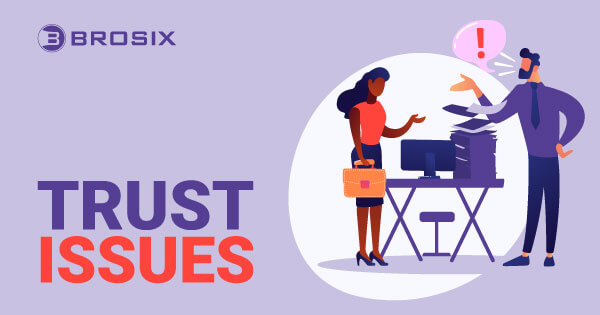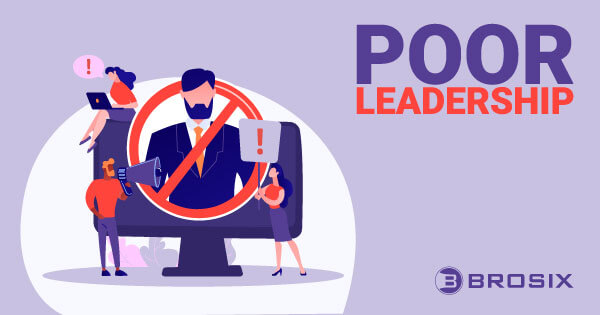We all know the common saying: Teamwork makes the dream work. But what happens when your team dynamics aren’t actually “working”? Building a collaborative, cooperative workplace is crucial to ensuring your company thrives in any environment.
However excellent team cohesion doesn’t always happen naturally. Often, business leaders and their employees need to work at cultivating the right environment and culture. This is perhaps particularly true in today’s context, in which employees are frequently distributed throughout different locations. When team dynamics aren’t carefully nurtured, businesses suffer.
In fact, 86% of employees cite issues with communication and collaboration as the key factor that leads to the most significant workplace failures. Identifying the key challenges people face when working in a team is the first step in building a more successful workforce.
So, what are the main issues for today’s organizations, and how can you overcome them?
The 10 Most Common Challenges of Working in a Team Environment
It’s worth noting that the core challenges of working in a team can vary depending on the business environment. For instance, if like many companies today, your team is made up of numerous remote employees , you may suffer from issues like poor scheduling or isolation.
If all of your team members are located in the same place, you’re less likely to encounter the challenges of working in a virtual team. Here are some of the core issues almost any company could face, and what you can do to overcome them.
1. Trust Issues

Trust is by far one of the most important characteristics of a successful team. It’s a key building block of any relationship, and it’s necessary to ensure that people can work together collaboratively and cohesively. A lack of trust doesn’t just create a toxic work environment, it can also threaten productivity, de-motivate team members and lead to lost opportunities.
Google’s Aristotle project even found that trust was one of the most important requirements in building a high-performing team. Unfortunately, while trust can take years to build in a workplace, it can also take seconds to destroy. The best way to develop trust is to build a culture of transparency, honesty and openness in your business.
Focus on championing authentic conversations and commit to developing the constructive relationships that blossom between your team members. Even training employees on developing soft skills such as active listening and empathy can be helpful.
2. Distance
Distance has emerged as a relatively common challenge of working in today’s virtual, hybrid and remote world. As more employees work from home, or various distributed locations, there’s now less opportunity for team members to connect on an emotional level.
When people in a team are distributed, it can lead to increased feelings of isolation and disengagement. This is particularly common in the hybrid work environment, where remote employees are frequently overlooked. Around 25% of employees said that they’re more likely to ask for opinions and insights from people they interact with in-person, than their remote colleagues.
The best way to overcome the challenge of distance is with technology. Use communication tools to create a more inclusive environment, where everyone can share ideas and thrive. Rather than hosting in-person meetings and announcements, use video conferencing. When sharing updates with teams, use a messaging tool to broadcast information to everyone at once.
3. Lack of Clarity
Building a collaborative, productive workplace starts with ensuring every member of your team has clarity on the goals they need to achieve, how their work will be evaluated and how they’re contributing to the business overall. A lack of clarity leads to confusion, delays in productivity and a host of other issues which can affect the company’s bottom line.
Unfortunately, clarity can be difficult to deliver in a lot of working environments. Managers and supervisors with limited time often fail to fully outline the requirements of each task assigned to employees. This can lead to staff members wasting time and making more mistakes.
Using productivity apps and tools can be an excellent way to increase clarity, by giving employees a key checklist of tasks they need to work on. However, it’s also important for team leaders to take the time to explain tasks thoroughly, and answer questions to avoid misunderstandings.
4. Personality conflicts

The most productive, creative, and effective teams are often made up of a diverse range of individuals with different skills and backgrounds. Adequate diversity in a team can reduce the risk of another common challenge of teamwork: skill overlap, where too many people with the same abilities are fighting for ownership over a project.
However, bringing different team members together in a team means you’re more likely to encounter clashes in personality, work habits and communication styles. While people with different personalities and philosophical values can still work together effectively, they’re often more likely to encounter misunderstandings and conflicts.
There are various ways to reduce the risk of personality clashes in the workplace. One option is to train employees on how to be more accepting and inclusive with team-building exercises. Another is to create teams based on your knowledge of how different personalities might work well together. Business leaders with a good understanding of their employees can often more easily ascertain which employees will work best together.
5. Lack of Communication
Teamwork is all about collaboration and cooperation. However, collaborative environments can’t thrive unless people are able to communicate clearly and effectively. Effective communication is one of the core components of an effective team, however not all employees will instinctively know how to communicate well. People from different generations and cultures may even have specific “ communication models ” or methods which may not align with their colleagues’ styles.
Problems with communication can be difficult to overcome. If there’s a fundamental issue with the styles of communication your employees use, the best option may be to focus on delivering training, so you can teach them how to listen and connect more effectively.
If the problem is an inability to communicate effectively, business leaders can enable communication by giving team members numerous ways to connect fruitfully. Using a platform like Brosix, which allows team members to choose their preferred communication style for different types of conversations (such as messaging, video or voice), can bridge communication gaps.
6. Communication Overwhelm
On the other side of the coin to lack of communication, we have another, perhaps equally problematic issue: too much communication. While keeping employees connected is crucial, it’s important to remember that excessive communication can lead to confusion and drops in productivity.
For instance, if your company hosts several meetings a day, this could mean your employees are constantly being pulled away from other tasks to communicate with colleagues. With this in mind, it’s important to ensure that people are using the right communication methods, at the right times.
Give people different ways to connect with their colleagues based on their availability and how open they are to long conversations. For instance, if a team member simply needs to check in on the progress of a project, it often makes more sense to send a quick message over chat than it does to arrange a full video call. When sharing information in team meetings, ask who actually needs to be present in the conversation, and allow other employees to attend on a voluntary basis.
7. Poor Engagement
According to studies, highly engaged employees deliver a 23% higher level of profitability to their companies than their disengaged counterparts. High levels of engagement in the workforce can also reduce employee turnover and improve company culture.
However, engagement can be challenging to cultivate and preserve. In today’s world, where employees are frequently disconnected from their teams and business leaders, it can be easy to feel “isolated” or removed from the broader goals of the business. This can lead to disengagement, and disinterest.
The best way to boost engagement is to give employees purpose and drive. Help team members to understand the role they play in your organization, and provide them with regular feedback to help guide them towards success. Set goals for your team members to achieve, and reward them when they accomplish their targets.
8. Excessive Competition

Competition in the workplace can sometimes be a positive thing. A little healthy competition can be a great way to build bonds between teams, keep staff members motivated and boost engagement. However, when competition becomes too aggressive, it starts to lead to a toxic workplace.
If each team member is constantly trying to out-perform the other, conflict in the workplace becomes common. Team members may refuse to help other employees, or actively take steps to sabotage them to make themselves look better. Staff might withhold information, which leads to a lack of trust, or even badmouth other employees.
The key to overcoming this challenge is making sure competition is used carefully. When setting up competitions, make sure employees are encouraged to work together, by rewarding teams rather than individuals. Outside of competitive challenges, champion collaborative and cooperative behavior, by celebrating examples of good team work.
9. Lack of Self-Awareness
For people to work well in a team environment, they need to be aware of themselves, and the impact they’re having on others. When employees have low levels of self-awareness, they’re more likely to act selfishly or rebelliously. They may consider their own goals to be more important than the goals of others, and show disrespect to their team members.
These traits are more common in today’s workplace than you might think. One Harvard Business Review found that while 95% of people consider themselves to be highly self-aware, only 10-15% actually are. People with a lack of self-awareness are disruptive and frustrating to others, and they can even lower a company’s chances of succeeding in its projects.
The best way to tackle a lack of self-awareness, is to approach the issue directly. If a manager or supervisor notices an employee acting with a low degree of self-awareness, they should speak to that team member and ask them if they understand how their behavior is affecting others. Find out why they’re behaving in a certain way, and come up with a solution to resolve the issue together.
10. Poor Leadership

Finally, the success of any team often hinges on the tactics and methodologies of its leader. Team members in all environments look to their managers, supervisors and other executives for guidance on how to behave. If the leadership in a company isn’t providing clarity, support and direction, then the rest of the team will become less productive.
Signs of poor leadership can include anything from missing team chemistry, ineffective employee communication, high turnover and even micromanagement. The best way to resolve issues with poor leadership is to collect feedback from employees. Find out what they like and dislike about the leadership strategies used in the company, and create plans to resolve problems.
Providing leaders with regular training can be helpful too. Teaching supervisors and managers how to provide effective feedback, motivate teams and even show emotional intelligence and empathy can lead to a more productive, united team.
Don’t Underestimate the Power of Teamwork
Working in a team can be more challenging than people realize. Many different factors can disrupt the dynamic, from distance, to disjointed communication styles. However, once you know how to diagnose the problems your staff members are facing, you can begin to implement strategies which synergize and enhance your team.
With the guidance above, you’ll be able to build a collaborative workplace culture, where teams communicate and thrive together. As your teams begin to work more effectively together, you’ll see the results in terms of higher levels of engagement, better productivity and even increased profits.






